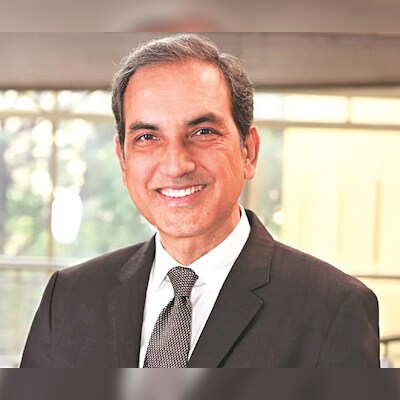HUL Q4 results: Net profit slips 1.6% to Rs 2,558 cr, demand pickup expected
Rohit Jawa, MD & CEO, HUL
Hindustan Unilever (HUL), India’s largest fast-moving consumer goods (FMCG) company, on Wednesday reported a slight dip in its consolidated net profit (attributable to the owners of the company) for the March quarter of 2023-24. Still, the figure of Rs 2,558 crore, down 1.6 per cent year-on-year from Rs 2,600 crore, exceeded market expectations.
The company said it anticipates a gradual improvement in consumer demand. The FMCG major’s revenue saw a marginal increase of 0.6 per cent Y-o-Y at Rs 15,041 crore, while volume growth was a modest 2 per cent Y-o-Y.
)
In Bloomberg’s consensus estimate, analysts had projected HUL’s revenue at Rs 15,156.7 crore and net profit at Rs 2,517.2 crore for Q4FY24. The company’s PBIDT (profit before interest, depreciation, and tax) rose by 0.9 per cent in the January-March quarter, reaching Rs 3,766 crore.
In the quarter ended March, HUL’s A&P (advertising & promotion) investments increased 200 basis points (bps) as it continued to bolster investments behind its brands. The Ebitda (earnings before interest, taxes, depreciation, and amortisation) margin at 23.4 per cent declined by 30 bps, primarily due to a 60-bps impact from the termination of the GSK consignment selling arrangement and investments in long-term capabilities, as stated in HUL’s earnings release.
“We have seen gradual recovery sequentially. Every quarter, it gets a little bit better as the bases lap. We believe that the market is slowly returning back to normal. If macros and monsoons do help the agri-economy — that is a certain factor that’s outside the control of everybody — then that will also add to the change,” said Rohit Jawa, managing director & chief executive officer of HUL, at the company’s press conference after it presented the results.
Ritesh Tiwari, chief financial officer at HUL, expects a low single-digit decline in the company’s product prices in the near term. “If commodity prices remain where they are, we envisage price growth to plateau in midterm and become positive in the low-single-digit range by the end of this financial year,” Tiwari further said.
He also expects forecasts of above-normal monsoons and improving macroeconomic indicators to augur well. He noted that prices of crude oil, crude palm oil, and tea have a major impact on its pricing decision. “At this stage, commodities are benign, and we’ll see what happens going forward. Hence, the outlook that we have at this point in time is that the benign atmosphere will continue unless we end up learning and knowing new things about it.”
In a company press release, Jawa was quoted as saying, “We remain focused on driving operational excellence and have continued to build back our gross margins while stepping up investment in brands and long-term capabilities.”
On rural demand, Tiwari explained that last year, rural markets were declining and for a point in time, it was declining almost in double digits. “From that low point which was at a peak of inflation, markets have recovered for the past three-four quarters.” He further said that it is not accretive to overall FMCG demand but the good news is that it is starting to recover and the gradual recovery, which was long-awaited, is now starting to show.
“I’m hoping that a quarter or two down the line, with a better monsoon and continued good macros, the recovery should continue to happen,” Tiwari said.
The company said that rural has not yet outpaced urban growth, explained that one looks at the March quarter market growth, then rural is higher than urban.
“Overall for the FMCG market, rural has not yet outpaced urban growth. If I just look at the current quarter market growth—rural looks higher than urban. On a two-year CAGR basis, urban is still growing ahead of rural, but rural is catching up. There was a very dramatic difference between the two, now the difference is narrowing down between urban and rural growth,” Tiwari explained.
First Published: Apr 24 2024 | 11:25 PM IST
